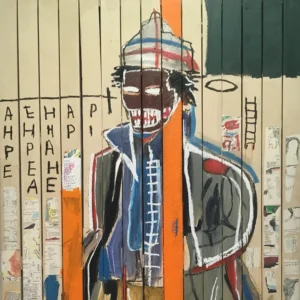Portraiture—historically a vehicle for celebrating royalty—has undergone a groundbreaking transformation, reinterpreted by contemporary artists. In the second half of the twentieth century, it evolved into an art form that questions and redefines identity and deeply ingrained social structures.
Contemporary portraits capture personal expressions, conveying the sitter’s character with profound empathy, while exploring both the sitter’s and the artist’s relationship with the world.
The eleven artists featured in this article, including Lucian Freud, Kehinde Wiley, and David Hockney, are renowned for pioneering contemporary portraiture. Whether through drawing or photography, their portraits transcend cultural boundaries and offer a glimpse into the universal human experience.
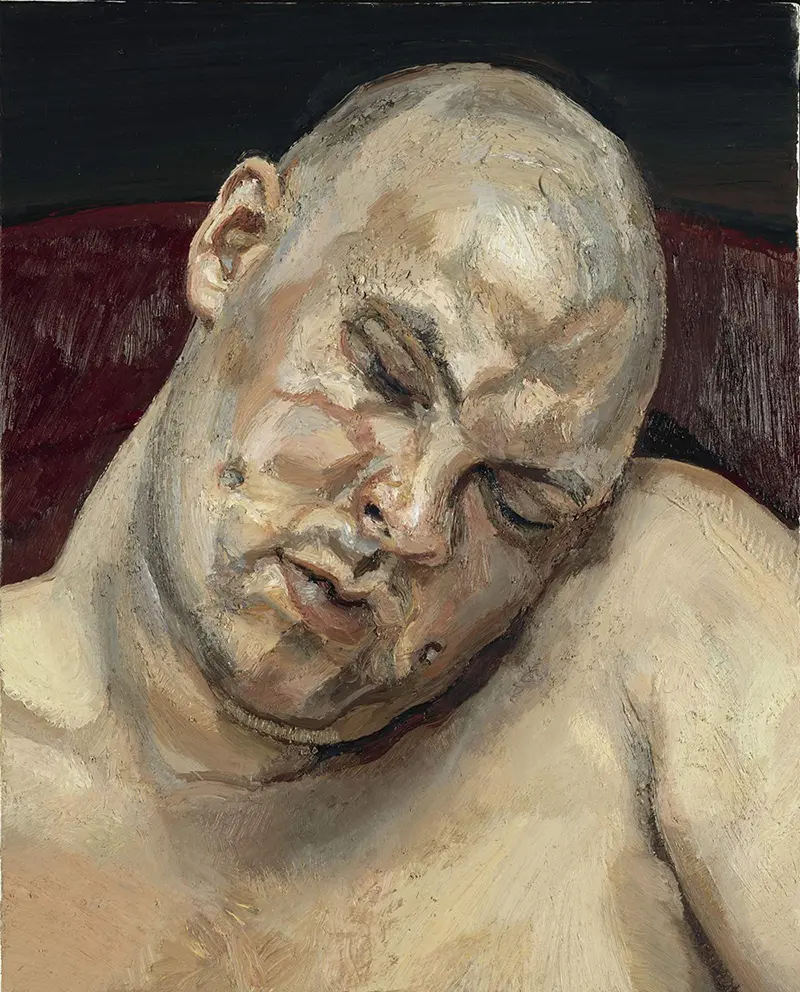
Lucian Freud (Known for: Benefits Supervisor Sleeping)
Freud’s depictions of naked subjects, portraying them with complete realism and great detail poses a challenge to the viewers. His dark and edgy portrayal of human bodies made Freud one of the best-known portrait artists in the United Kingdom. He would often place his subjects at odd or uncomfortable angles, creating rough and unflinching views. He used the human body to make statements in many provocative ways. Freud’s paintings reveal how an artist can realistically capture the texture and color of flesh.
Freud’s portraits are both intimate and confrontational, reflecting his deep personal connections with his subjects. His paintings, which span more than six decades, reflect the artist’s own life because he frequently included his surroundings and worked with friends, family, and lovers. He also included dogs, horses, and cats in his work to explore relationships between people and their environments, as well as the human connection to animals.
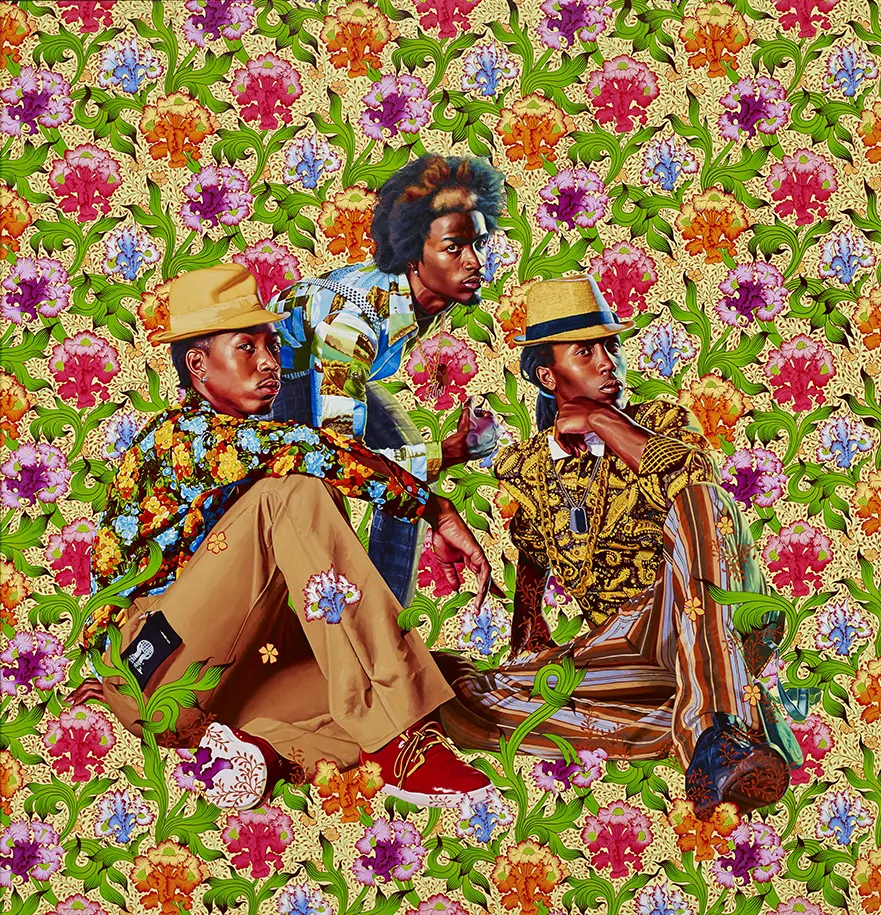
Kehinde Wiley (Known for: The World Stage series)
Kehinde Wiley is known for his ability to take ordinary people as subjects and turn them into something monumental, challenging the traditional language of power in portraiture. His works blend classical art traditions with contemporary culture. Wiley’s works have dramatically altered traditional portraiture, taking depictions of famous white male figures in portraiture and substituting them for men of color. Wiley’s subjects mimic the poses found in these historical artworks painted by such Old Masters as Titian, Ingres, and Anthony van Dyck; adding another layer of depth to his portraits.
His style features meticulous detail, vibrant colors, and intricate patterns, giving a sense of grandeur and majesty to his subjects. The names of his works often reference their historical sources, like “Napoleon Leading the Army Over the Alps” and “Equestrian Portrait of King Philip II (Michael Jackson),” celebrating the contemporary Black individual while using traditional depictions of power, continuing the discourse on racial and identity politics.
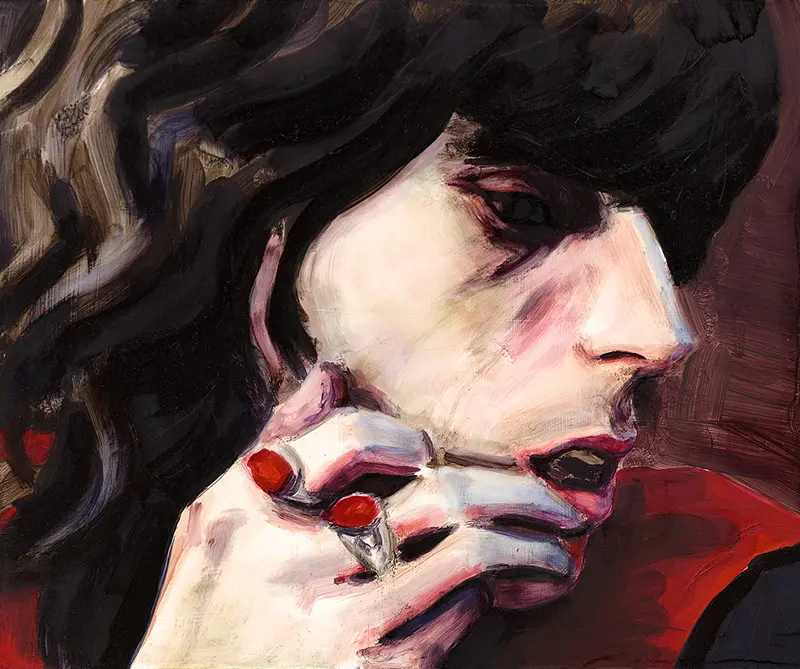
Elizabeth Peyton (Known for: David Bowie)
American contemporary artist Elizabeth Peyton primarily works with painting, drawing and printmaking in her portraits. Her portraits usually feature people she knew as subjects, her close friends or historical icons. Peyton’s portraits capture a sense of vulnerability and authenticity in her subjects. Her works are known for evoking feelings of love, sympathy and desire in the viewers.
The subtle gestures and gazes that she paints in her portraits convey profound human emotions, inviting viewers to the sitter’s inner world. Her delicate brushwork creates an intimate atmosphere, emphasizing a melancholic yet light portrayal of her subjects’ emotions. Peyton made her name by drawing portraits of many notable names, ranging from close friends and romantic partners to cultural icons such as Kurt Cobain and Queen Elizabeth II.
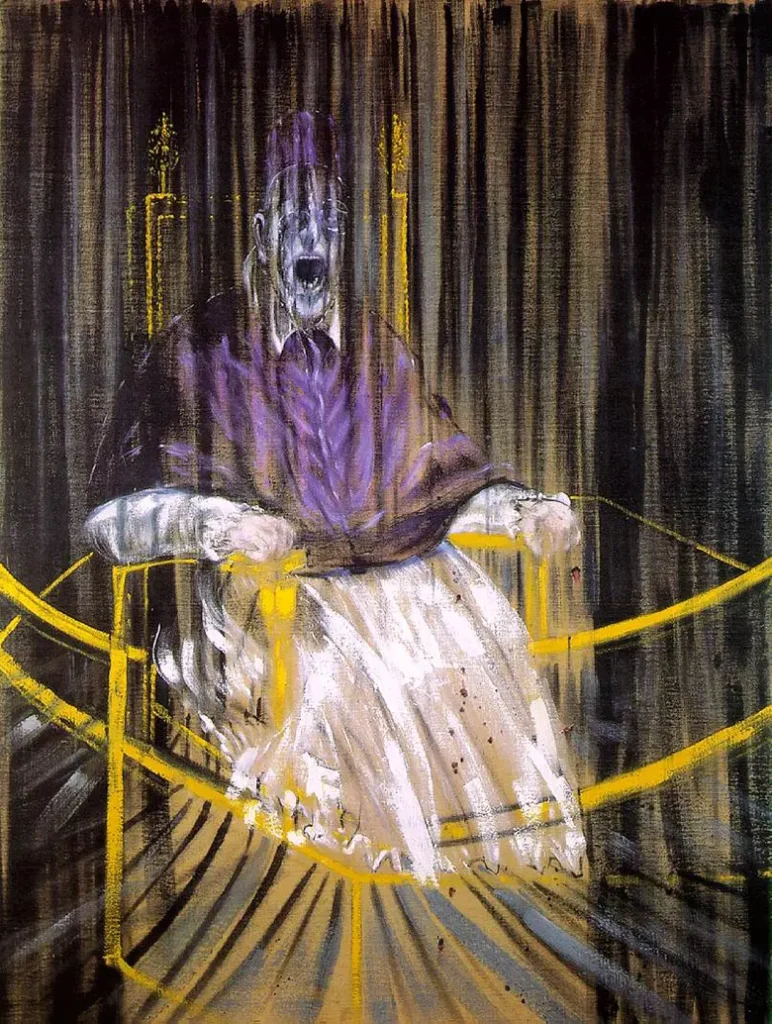
Francis Bacon (Known for: Study After Velázquez's Portrait of Pope Innocent X)
In Bacon’s work, bodies embrace the themes of suffering, alienation, and death. His dark and profoundly disturbing works has emerged Francis as one of the most influential painters of the 20th century. His portraits display people in forms which make them barely recognizable, exploring human emotions and existential despair.
He gained recognition for his artistic ability to catch the most extreme moments of existence, deeply reflecting the raw expressions of anxiety and fear. His work, inspired by the Old Masters but uniquely modern in its approach, offers a haunting and visceral take on portraiture. Bacon’s influence is evident in his ability to convey profound psychological depth. His artistic tradition is characterized by its intensity and distortion.
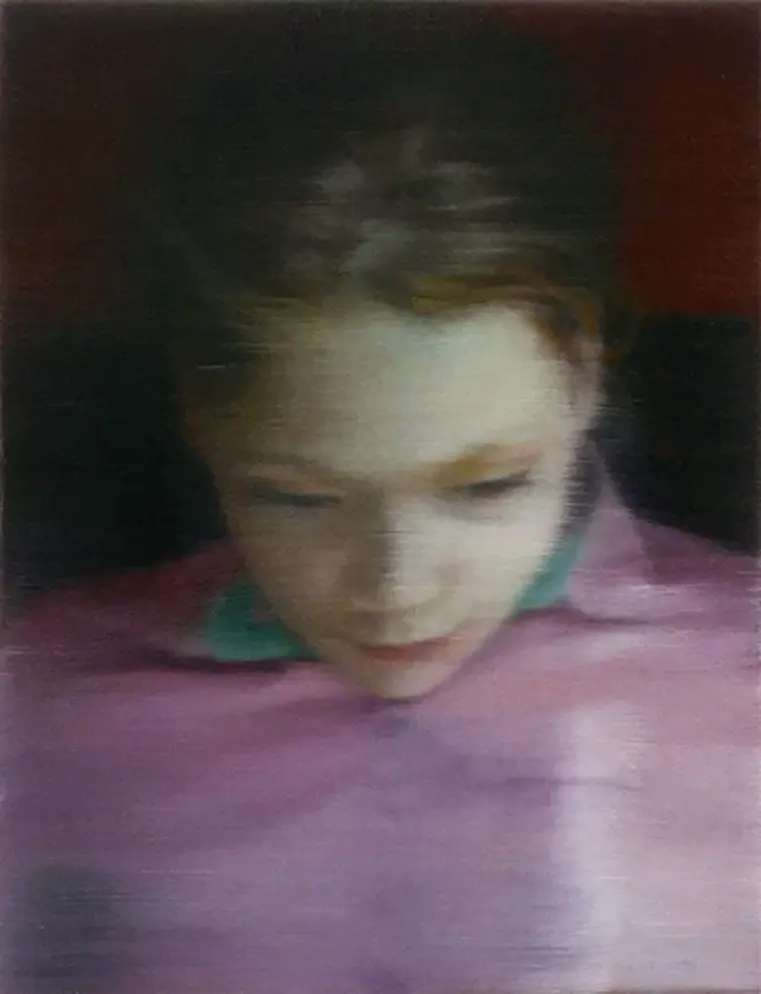
Gerhard Richter (Known for: Ella 903-1)
Gerhard Richter’s work is characterized by his use of photographs and unique approach to portraiture, stripping away the context that provides meaning. Richter’s portraits have this signature blurred image of familiar scenes, such as a woman with an umbrella or a young girl with a baby, which initially appear reassuringly ordinary but reveal deeper, poignant contexts upon closer inspection. His portraits often reveal little about the sitter, inviting the viewers to reflect with their own interpretations.
Characteristic of twentieth-century contemporary paintings, the portraits of Richter give a sense of nostalgia, discomfort, and intrigue at the same time. It is also possible to notice that Richter places perception and memory as the center questions in his works, which corresponds to the artist’s belief that art represents itself rather than reality.
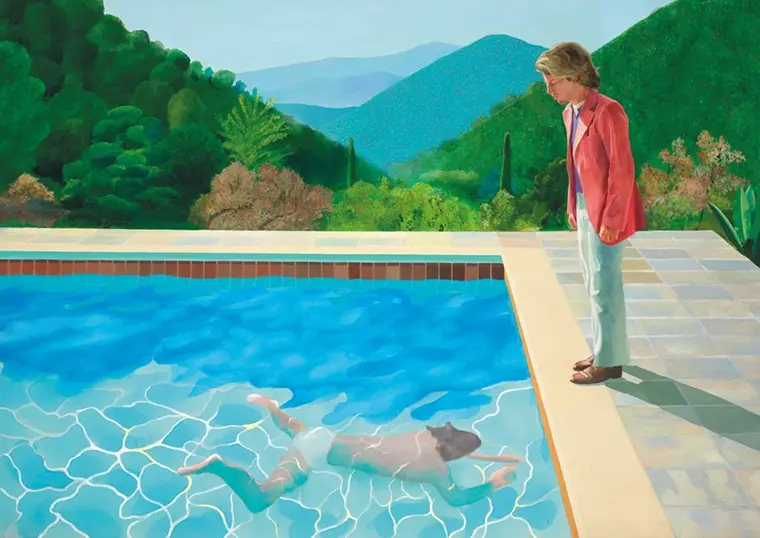
David Hockney (Known for: Portrait of an Artist / Pool with Two Figures)
The British artist David Hockney can produce in almost all types of art mediums and uses different art styles seemingly very easily. He has engaged in painting, printing, stage designs and even photography. At 87, he is still working! His sketchbooks and paintings show that a great artist does not have to only adhere to one unique style. In his portraits, Hockney prefers painting portraits of close friends or relatives, with each portrait reflecting their unique characters.
The consistency in each painting highlights the individual distinctions amongst the sitters, reflecting the artist’s own conceptions of these people. Hockney’s self-portraits are also representative of his desire to capture the essence of life. His portraits embrace bold color schemes and a simpleness element that makes the pieces timeless, which are also apparent in his landscape paintings. Drawing from Life and 82 Portraits and 1 Still-Life are some exhibitions that display Hockney’s portraits and offer a close view into the artist’s life.
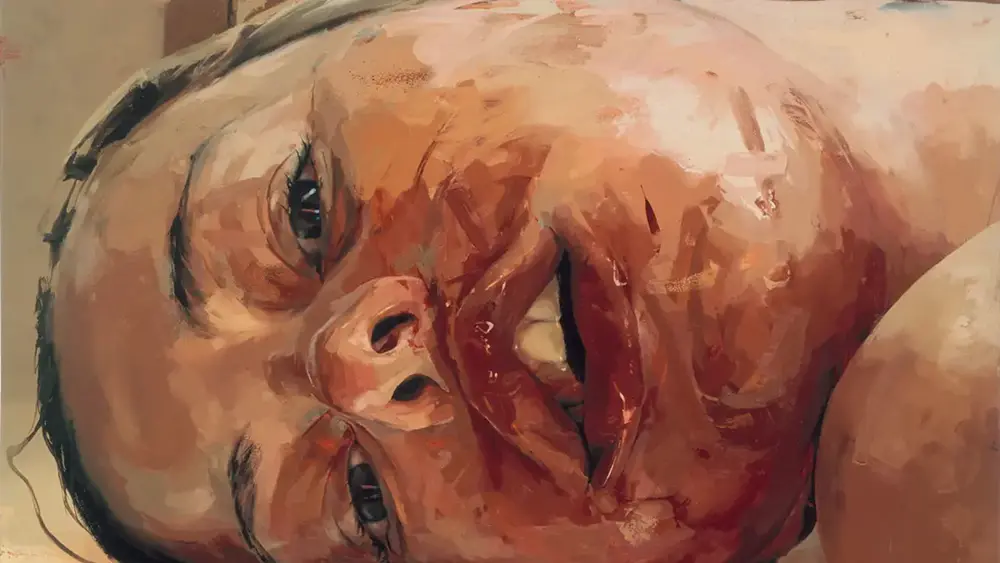
Jenny Saville (Known for: Propped)
Saville’s paintings, noted for the raw and honest portrayal of the human body, often challenge the beauty standards and body image, presenting her subjects with extreme figures. Saville’s approach to portraiture is both provocative and deeply engaging, pushing the boundaries of conventional aesthetics. Her style has been compared to that of Lucian Freud, with their immense emphasis on distorted and fleshy bodies.
Saville uses oil paint, applied with a range of brush sizes. This technique results in varied textures, with thicker paint applications on features such as ears and lips, creating an uneven surface that enhances the visual impact of her work. Her expressive strokes in portraying flesh, combined with lighter areas that highlight aspects of the body, give her paintings a texture that is cold and raw. This approach ties into her broader body of work, which includes portraits of butchered animals, and reflects her interest in exploring skin and texture.
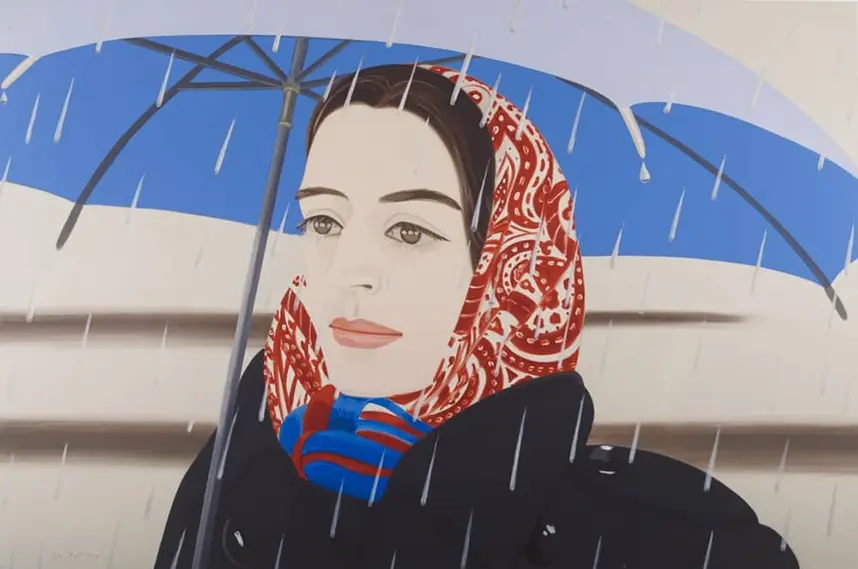
Alex Katz (Known for: Blue Umbrella II)
The American painter is celebrated for his distinctive approach to painting faces. Katz’s distinguishing characteristic lies in his contemporary take on portraiture with his clean lines and contoured elements. Though influenced by the American Pop Art movement, the artist does not associate his work with pop art. His paintings are nevertheless reflective of popular culture and iconography of his time with close-ups of people’s faces, arresting vibrant colors, and sharp brushstrokes that create flatness.
Katz is regarded as one of the most influential artists in the neo-expressionist movement, his aesthetic has redefined contemporary portraiture in the twentieth century. Katz concerns himself with technicality and uses sketching as a technique for perfecting his paintings. The artist’s emphasis on cleanliness and two-dimensionality allows for pure figuration and abstraction in his portraits.
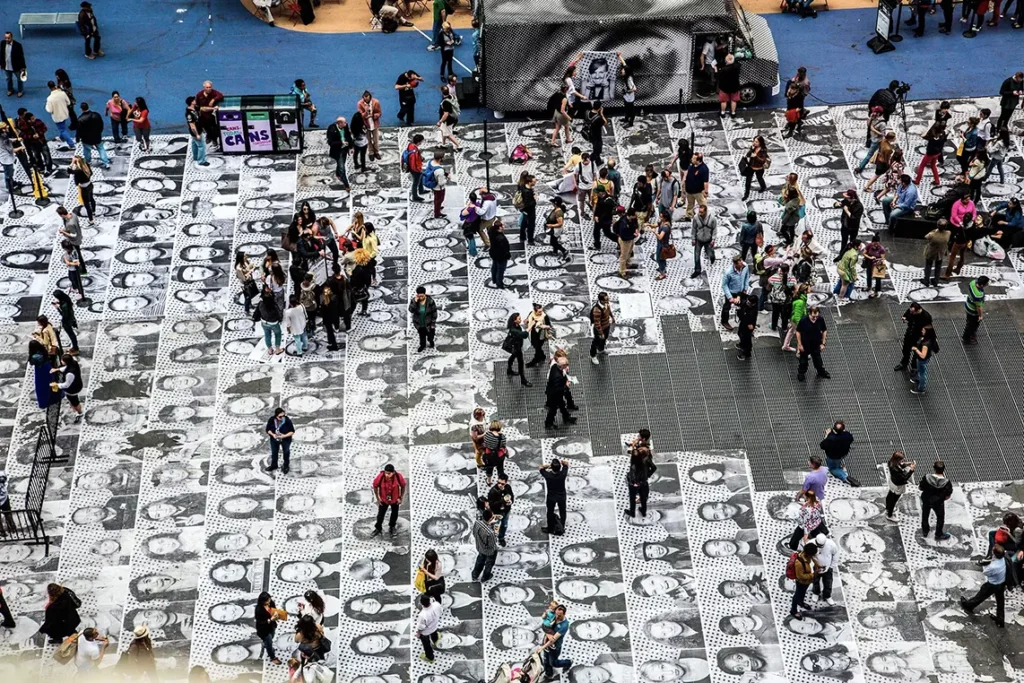
JR (Known for: Inside Out)
The French artist JR employs a contemporary method that combines photography and large installations to raise awareness of social issues. His large-scale portraits, in his distinct style, are exhibited on buildings in public spaces. These public portraits give voice to people who are marginalized, showing the artist’s strength in tackling significant socio-economic and political issues with art.
He invites the viewers to work with him in his art works, such as the project Inside Out. The concept of the project was to give people the opportunity to take their own portraits, and the project spanned over 140 countries. This global project is probably JR’s most famous street art installation, underscoring countless themes ranging from feminism, racism, climate change to children’s rights.
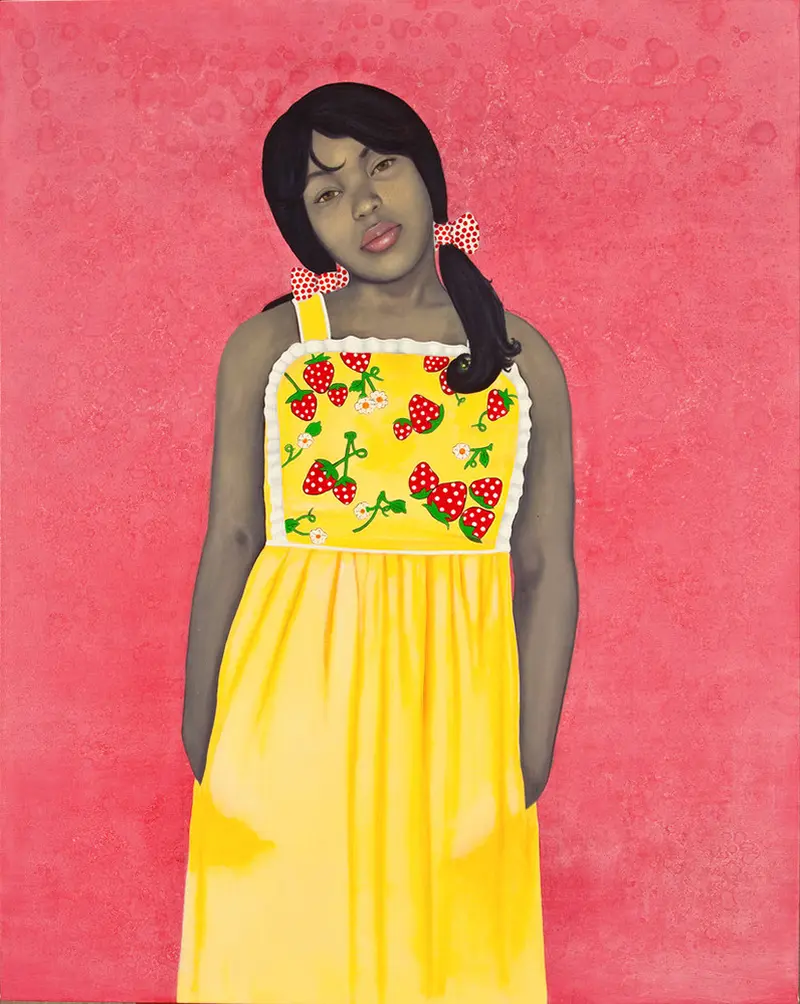
Amy Sherald (Known for: They Call Me Redbone but I’d Rather Be Strawberry Shortcake)
Amy Sherald is a contemporary African-American painter, who creates unforgettable and rather symbolic portraits that focus on the issue of discrimination in the black community. Sherald, known for her grayscale portraits with Black people, has changed the paradigm surrounding personal portraits. Sherald’s work, which often features an intensely colored background and shadowless, gray figures, encourages viewers to imagine a life beyond stereotypes and archetypes.
Her works separate the subjects from being defined by their skin color, making a bold political statement about equality and the humanity of all subjects. Her portraits in grayscale against vivid backgrounds are very straightforward and real. Her work is not preoccupied with decoration and superficiality. Her pieces have made a significant impact on the art world by openly integrating black people into contemporary visual culture.
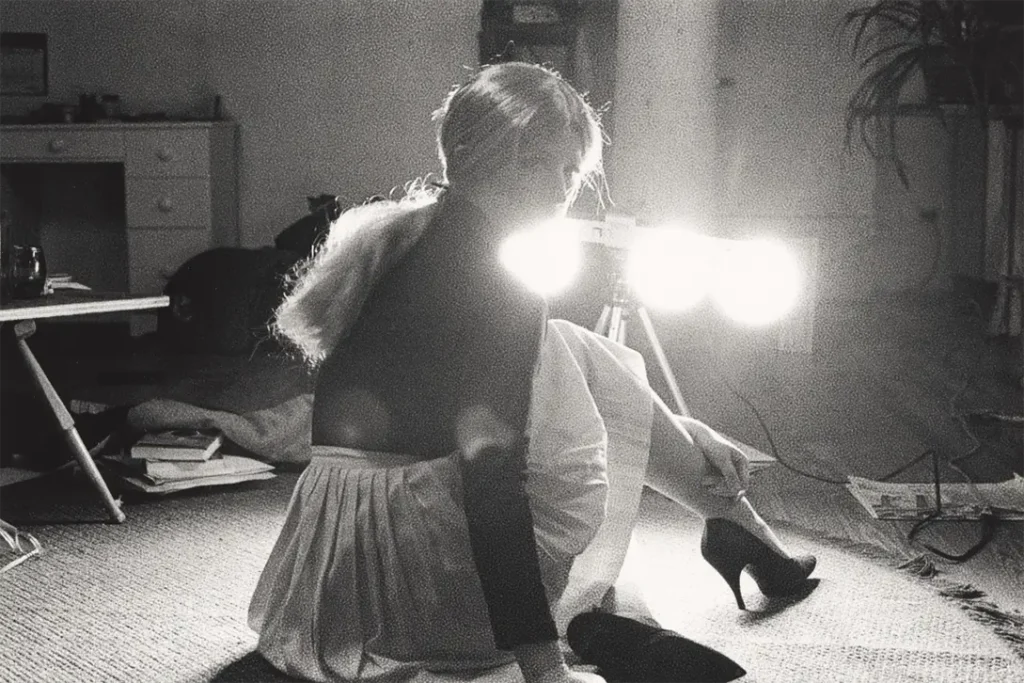
Cindy Sherman (Known for: Untitled Film Still)
Cindy Sherman’s photographs are representative of her own constructed identities. To explore issues concerning culture, identity and especially femininity, the artist assumes different roles in her work. Through her elaborate and often satirical impersonations, Sherman encourages viewers to question female stereotypes and societal expectations. Her meticulous use of costumes, makeup, and wigs allow her to play with the thin line between reality and fiction.
In recent years, she has also made use of digital techniques to further manipulate her photographs, making it more relevant to today’s world, where online personas challenge the notion of an “authentic” self. Her work with photography has been pivotal in the contemporary portrait art scene. Despite the historical perception of photography as less important than painting and sculpture, Sherman has embraced photography, believing it offered more creative freedom by allowing her to create her own reality.


